Siena Cathedral That Uncovers Magnificent 14th-Century Mosaic Floors
Siena Cathedral, also known as Duomo di Siena in Italian, is a medieval church in Siena, Italy.
The church was originally dedicated as a Roman Catholic Marian church and is now dedicated to the Assumption of Mary.
It has been a center of religious and civic life in Siena since its inception in the early 13th century.
Currently, it is the seat of the Archdiocese of Siena-Colle di Val d’Elsa-Montalcino.
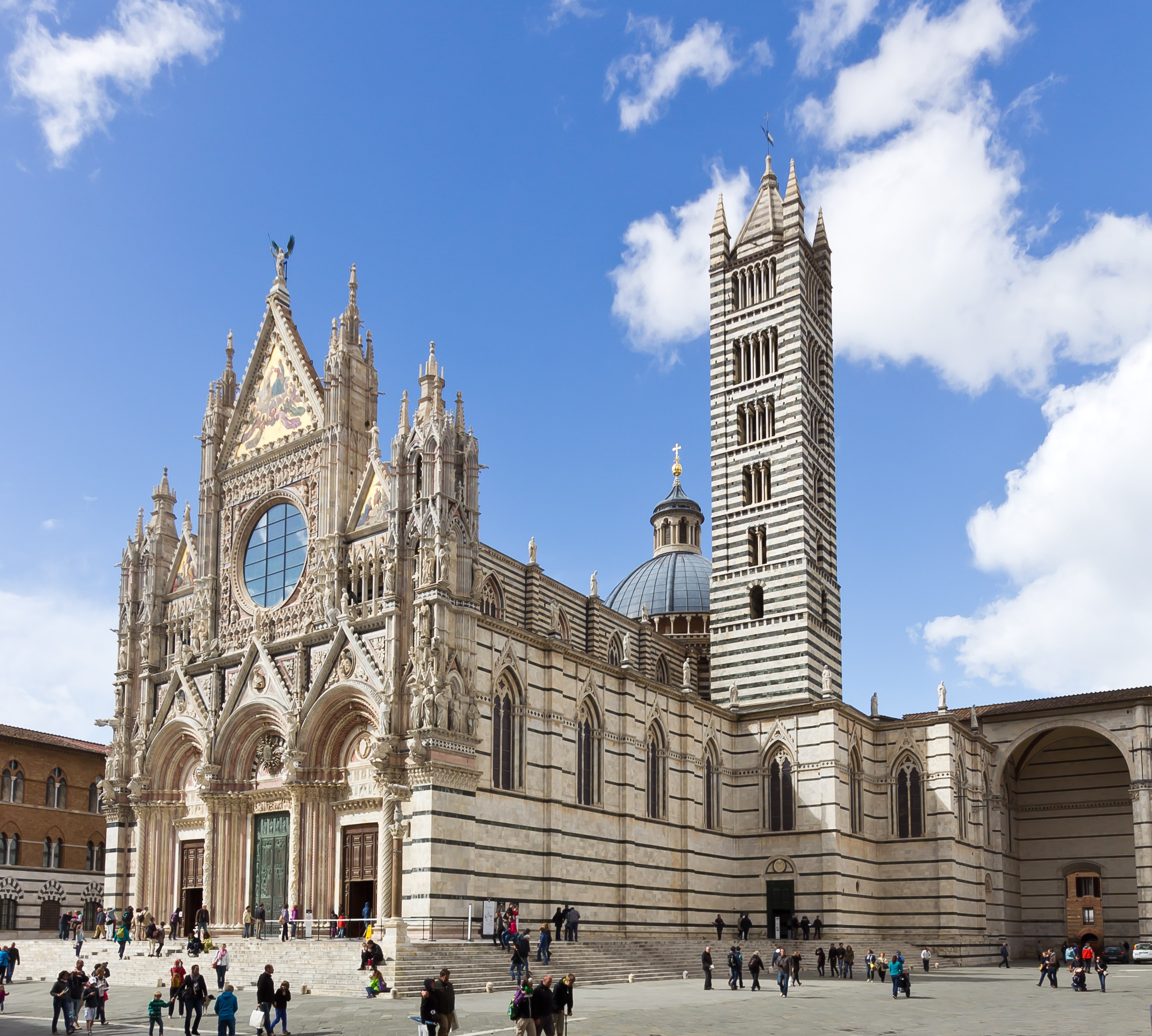
Construction
The Siena Cathedral stands on the site of an earlier church, with its construction overseen by the Opera di Santa Maria, the cathedral masons’ guild established in 1196.
Its construction began in 1215. At that time, daily masses were held in the new church.
Records from 1226 mention the transport of black and white marble, likely for the façade and bell tower.
Vaults and the transept were completed by 1260.
The construction was completed in 1263 with the laying of the foundation stone, marking the transition from Romanesque to Gothic architectural styles.
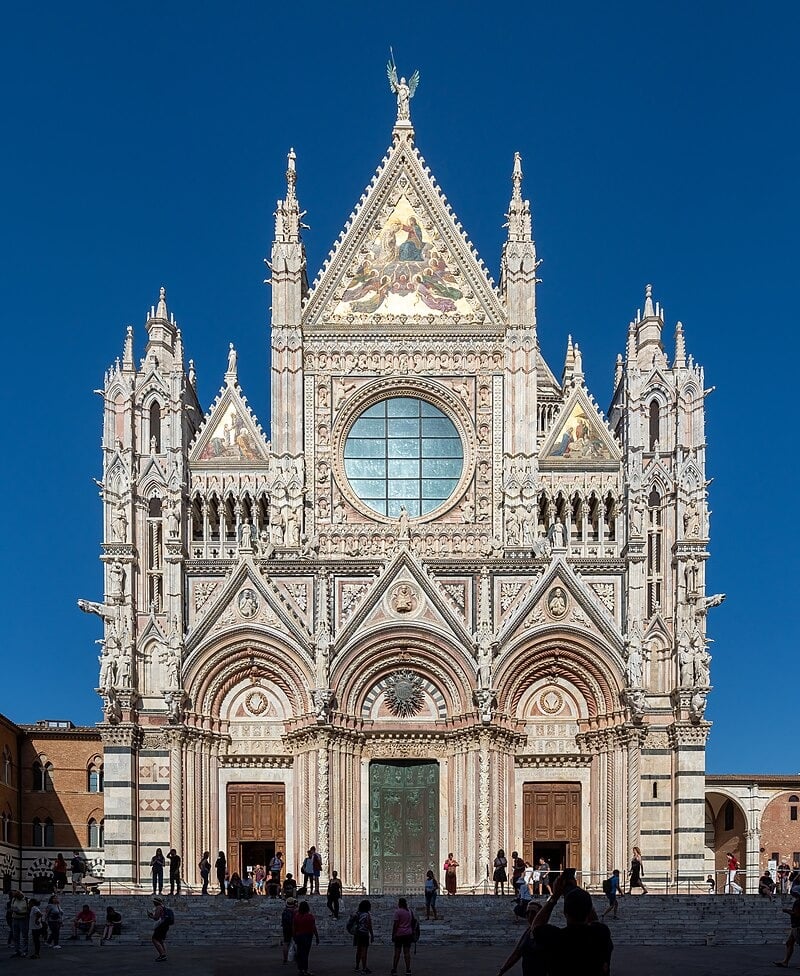
Expansion Plans
In 1339, a significant expansion of the cathedral was planned to more than double its size with a new nave and aisles perpendicular to the existing nave.
However, construction halted due to the Black Death in 1348, and errors in construction prevented resumption.
The remains of this expansion can be seen south of the Duomo, with the floor of the uncompleted nave now serving as a parking lot and museum.
A climbable wall offers high views of the city.
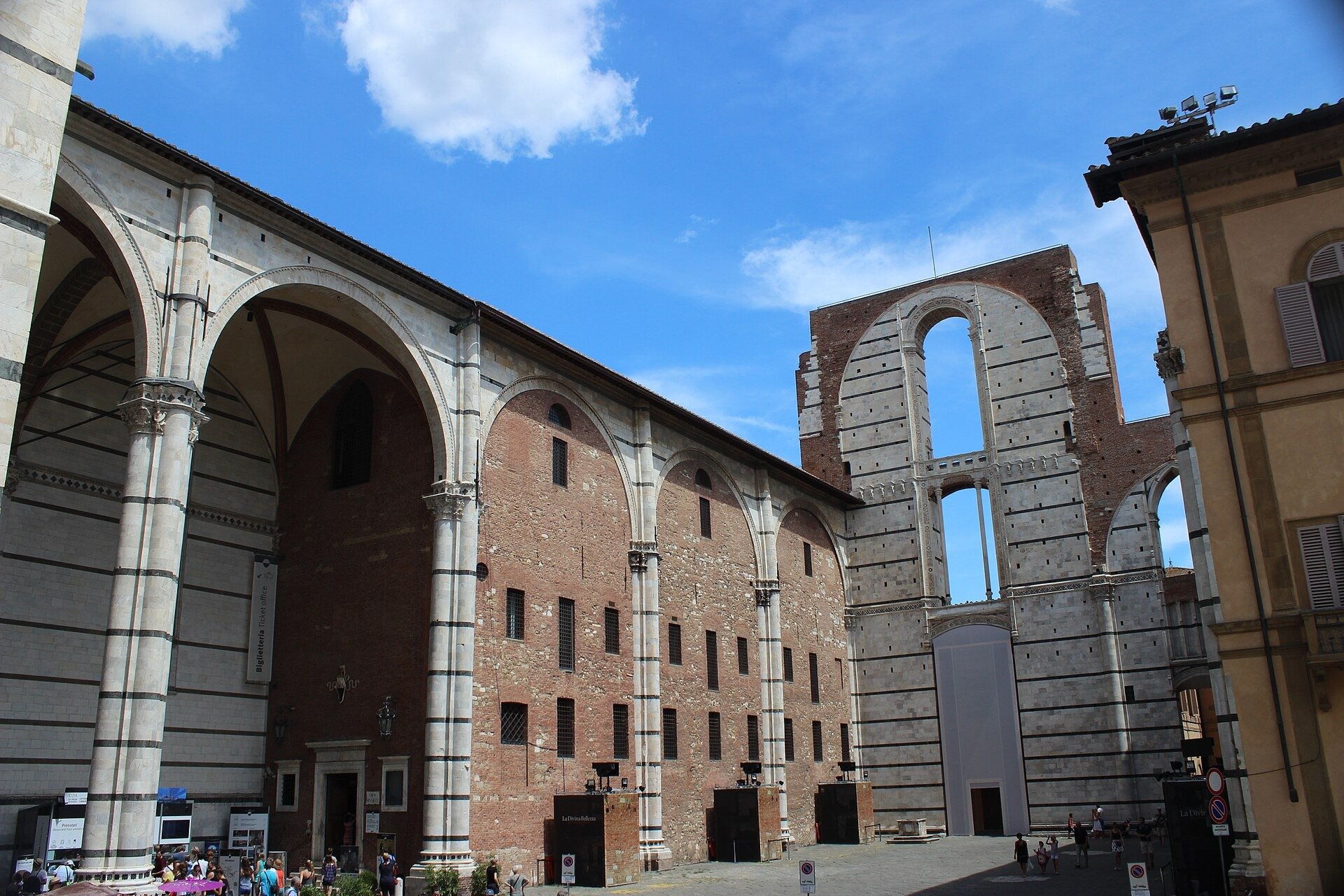
Notable Architectural Features
The cathedral’s layout forms a Latin cross plan with a pronounced transept, a dome, and a bell tower.
The exterior and interior feature white and greenish-black marble in alternating stripes, with red marble on the façade.
These colors symbolize Siena, tied to the legendary black and white horses of the city’s founders, Senius and Aschius.
The cathedral also boasts thirty-five statues of prophets and patriarchs grouped around the Virgin, created by renowned artists such as Nicola and Giovanni Pisano, Donatello, Pinturicchio, Lorenzo Ghiberti, and Bernini.

Inside, black and white marble stripes adorn the walls and columns.
The vaulted roof, decorated in blue with golden stars, replaces earlier frescoes. The stained-glass round window in the choir, designed by Duccio in 1288, is one of Italy’s earliest examples.
The pulpit, crafted from Carrara marble by Nicola Pisano between 1265 and 1268, showcases northern Gothic style and classical influences.
Façade
The west façade of Siena Cathedral, begun around 1284 and completed between 1360 and 1370, combines French Gothic, Tuscan Romanesque, and Classical architectural elements.
Giovanni Pisano designed the lower part, emphasizing horizontal unity.
The upper façade, likely inspired by Orvieto Cathedral and directed by Giovanni di Cecco, features elaborate Gothic decoration.
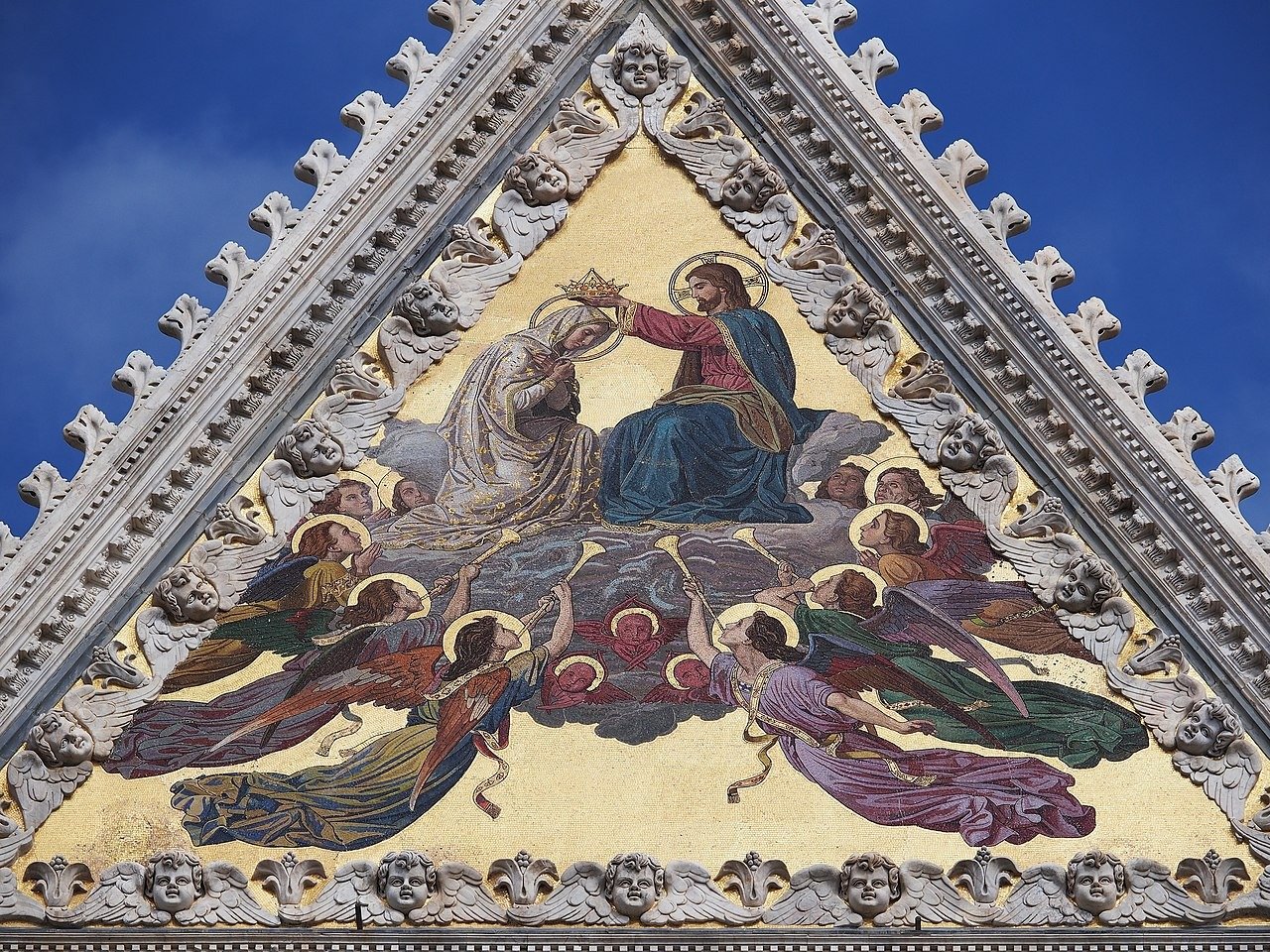
Statues adorning the façade, originally by Pisano and later Gothic sculptors, are now mostly copies, with originals kept in the Museo dell’Opera del Duomo.
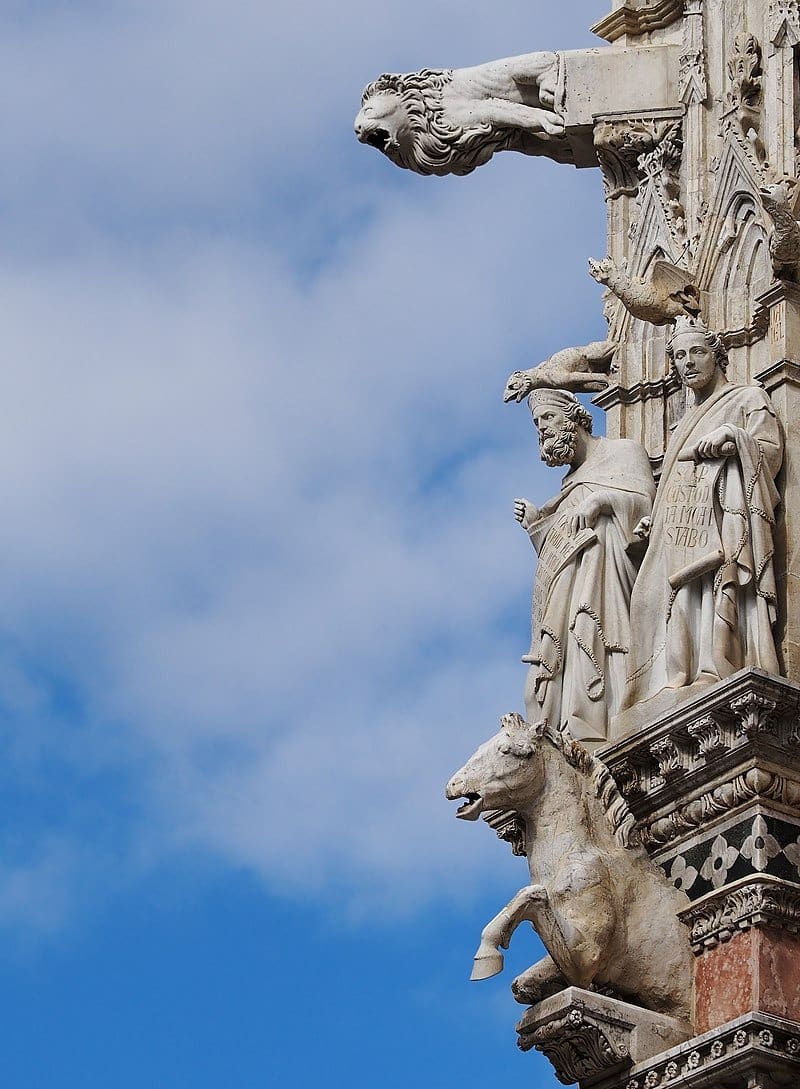
Bell Tower
The bell tower of Siena Cathedral is a striking example of medieval Italian architecture, standing tall at 77 meters (253 feet) high.
Built in stages over several centuries, its construction began in the early 14th century and continued well into the 16th century.
The tower’s design reflects a blend of Romanesque and Gothic styles, typical of the period when it was erected.
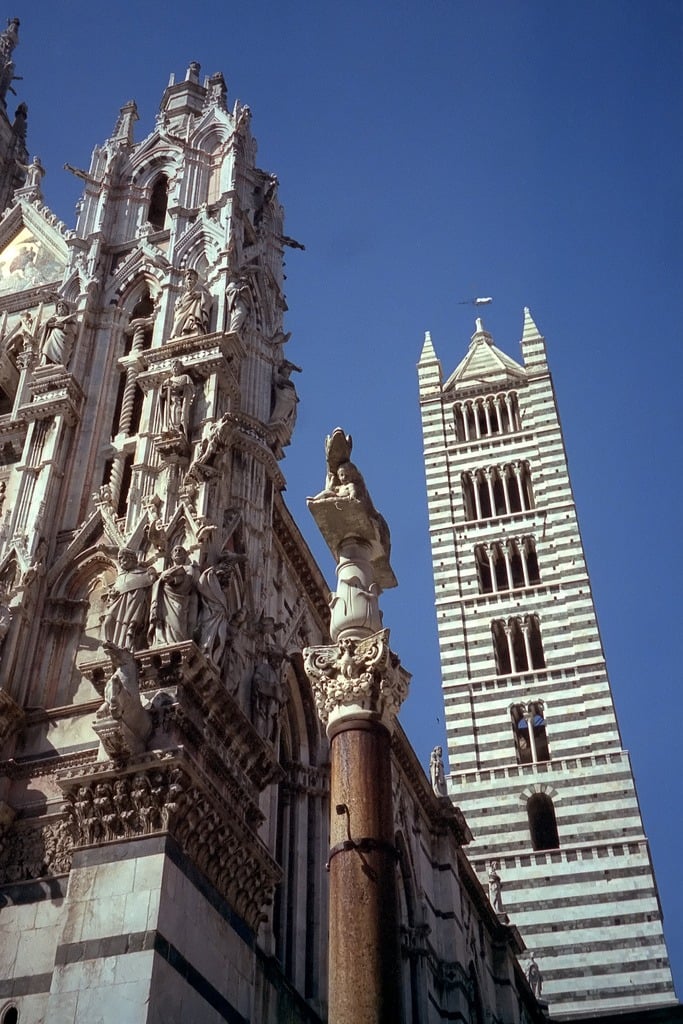
The bell tower is adorned with sculptures and intricate detailing.
The tower features six bells, with the oldest dating back to 1149.
The Dome
The dome was completed in 1264 under the direction of architect Giovanni Pisano.
Rising majestically above the transept, the dome is characterized by its distinctive hexagonal base with supporting columns and elegant proportions,
The room was constructed from brick and reinforced with iron bands.
In the 17th century, at its summit, Gian Lorenzo Bernini added a lantern.
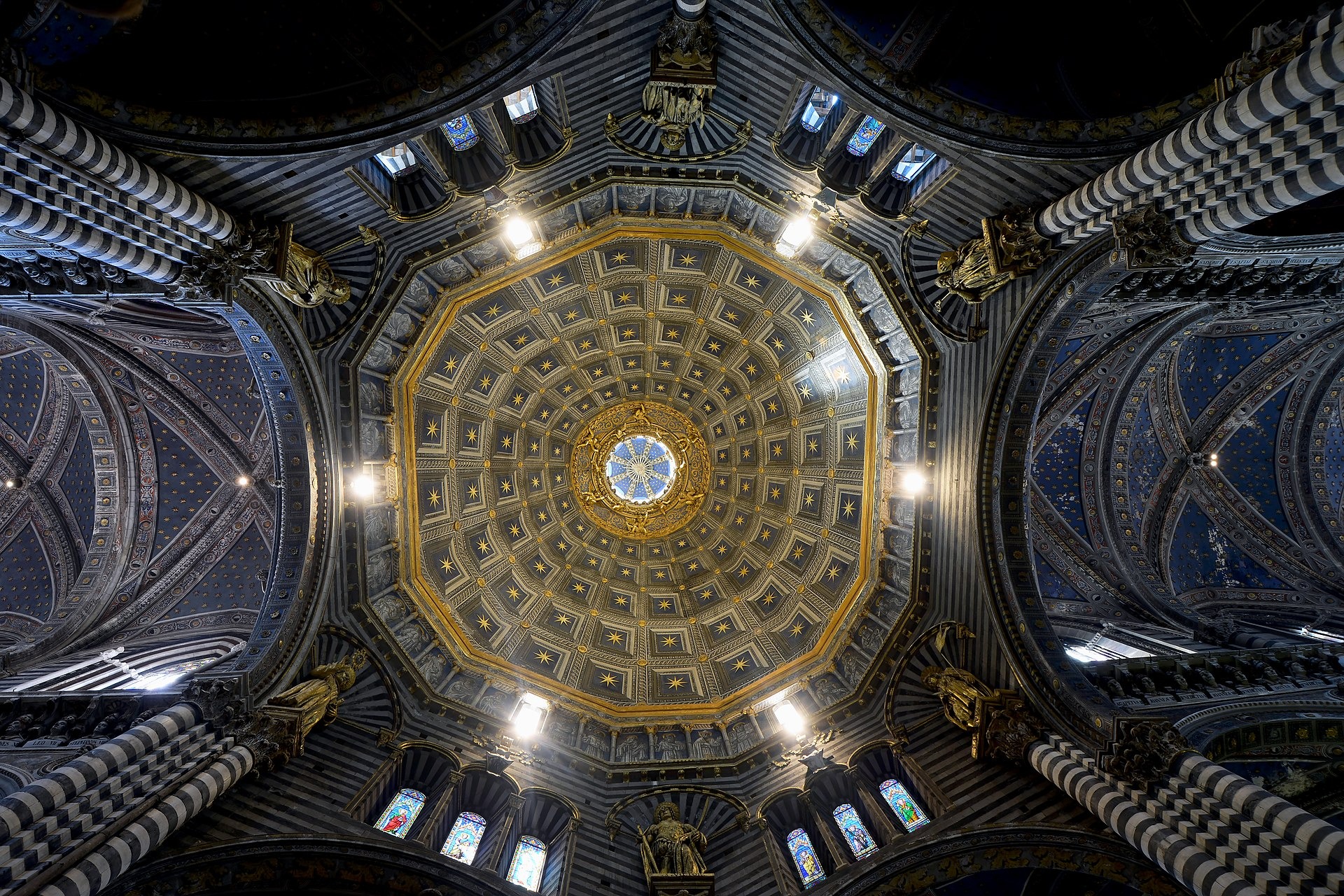
Inside, the dome’s interior is adorned with stunning frescoes.
The dome’s inner surface depicts a celestial panorama of scenes from the life of the Virgin Mary, painted by some of Italy’s most renowned artists of the 15th century, including Vecchietta and Pinturicchio.

The frescoes are arranged in concentric bands, beginning at the base with scenes portraying the early life of the Virgin Mary, including her birth and childhood.

As the viewer’s gaze ascends, the narrative progresses through pivotal moments such as the Annunciation, the Nativity, and the Coronation of the Virgin.
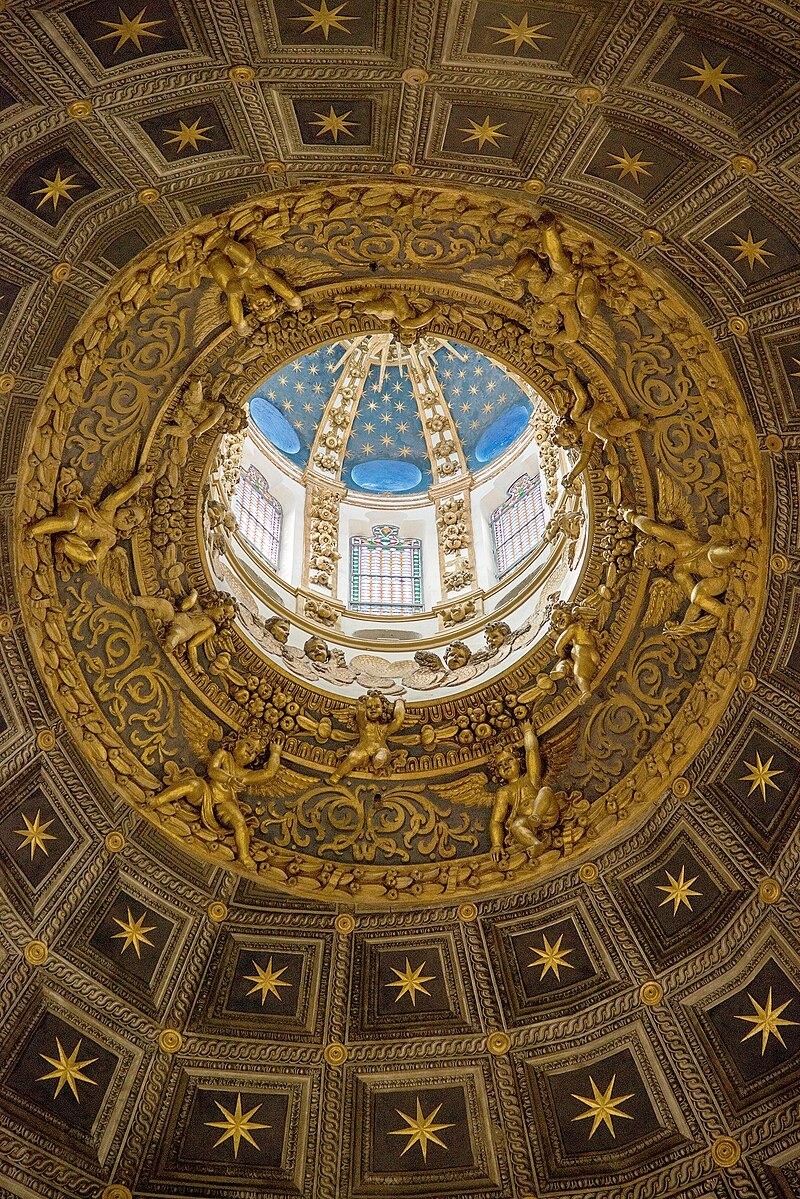
The Pulpit
The pulpit of Siena Cathedral was carved from Carrara marble between 1265 and 1268.
It exemplifies the transition from Romanesque to Gothic art styles.
Nicola Pisano’s pulpit blends Gothic elements with classical influences, showcasing intricate relief panels that depict scenes from the life of Christ.
The central theme revolves around the Nativity, with Mary and Joseph depicted alongside the infant Jesus, surrounded by shepherds and angels.
The pulpit’s panels also include symbolic figures and biblical scenes, each meticulously carved to convey emotion and narrative.
This place is supported by nine columns with sculpted capitals, each representing a different human virtue or vice.
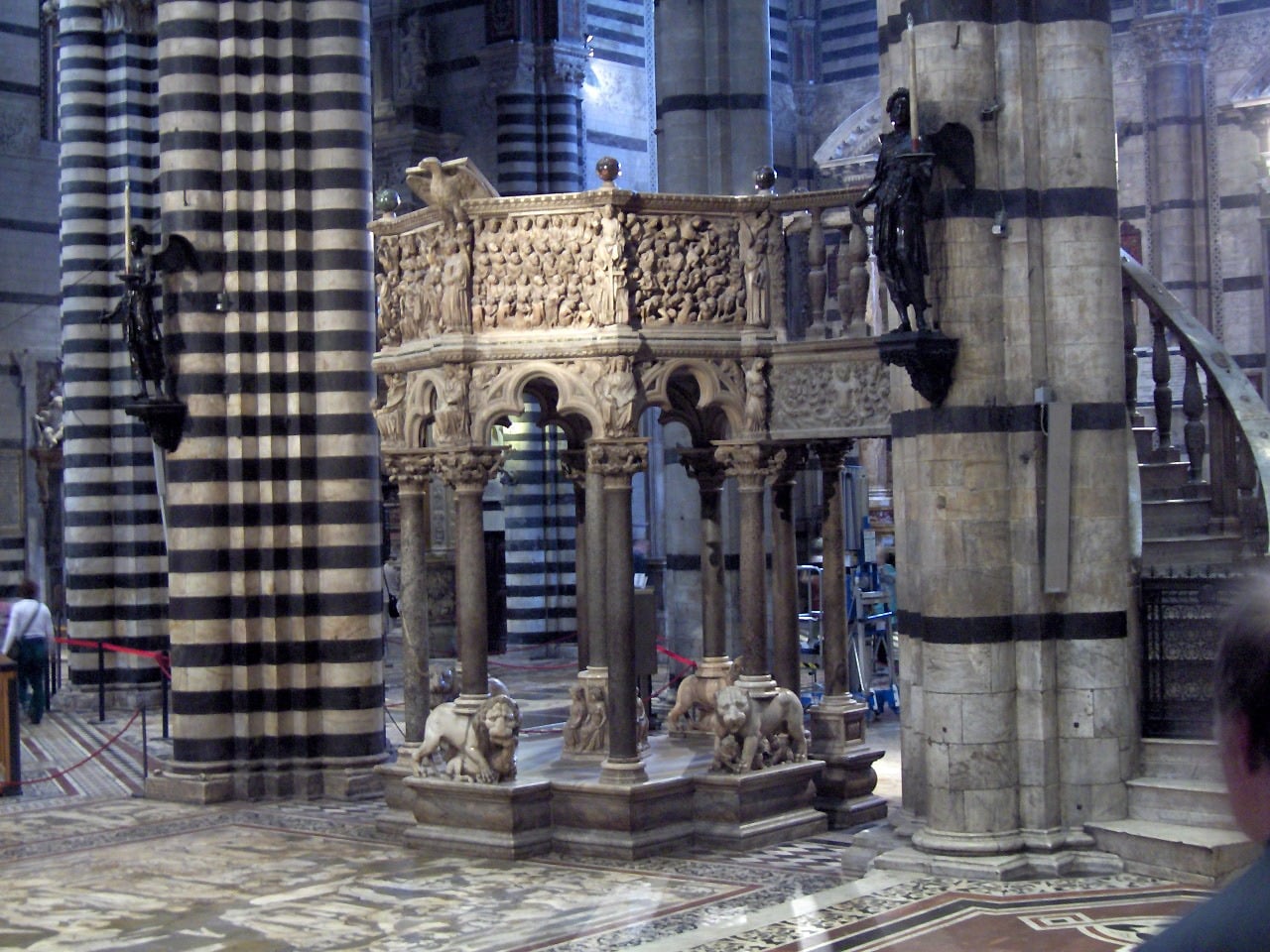
The Mosaic Floor
The inlaid marble mosaic floor, one of Italy’s most ornate, consists of 56 panels created by about forty artists from the 14th to 16th centuries.
These panels vary in shape, from rectangles to hexagons and rhombuses, each meticulously depicting scenes from the Old Testament, allegories, and virtues.

Originally, the panels were created using a graffito technique, where artists drilled tiny holes and scratched lines into marble, filling them with bitumen.
Over time, this evolved to include intricate inlays of colored marble, creating a vivid interplay of colors and patterns that reflect the cathedral’s artistic evolution.
Each panel tells a story or imparts a moral lesson, making the mosaic floor not just a decorative element but a profound narrative of religious and cultural significance.

Works of Art
The Feast of Herod by Donatello
One of the most celebrated pieces is “The Feast of Herod.”
This was the first bronze relief sculpture of Donatello. The artist gifted it to Siena Cathedral in c. 1427.
The sculpture is a striking relief depicting the biblical scene of Salome presenting the head of John the Baptist.
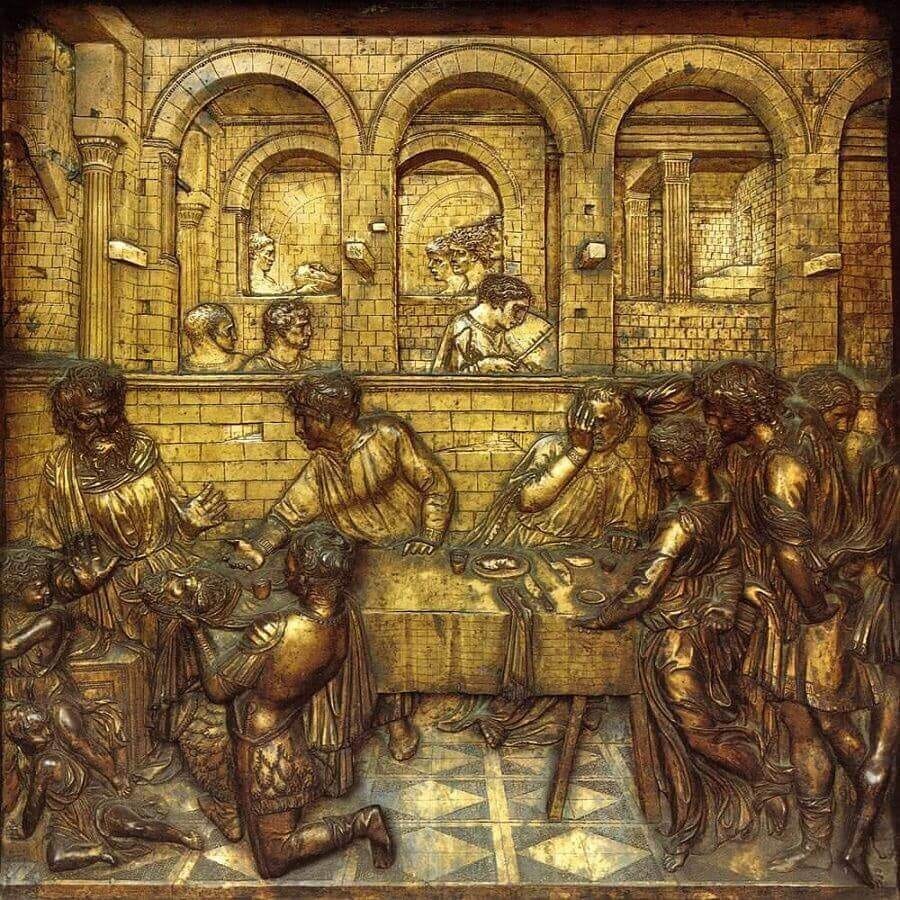
Saint Paul by Michelangelo Buonarroti
Another notable work is Michelangelo’s “Saint Paul,” a sculpture that showcases the young artist’s early genius.
Originally intended for the Duomo’s façade, it remains unfinished but provides a glimpse into Michelangelo’s evolving style and mastery of human anatomy.

Madonna del Voto
The Madonna del Voto, or Madonna of the Vote, is a revered icon housed within Siena Cathedral, also known as the Duomo di Siena, in Italy.
This icon holds deep religious and cultural significance for the people of Siena, dating back to the medieval period.
Legend has it that the Madonna del Voto played a pivotal role in the city’s history during times of crisis.
According to tradition, in 1260, the city of Siena faced a critical military threat from Florence.
The Sienese people turned to the Virgin Mary for protection and made a solemn vow, or “voto,” to honor her with a special icon if she granted them victory.
Upon their unexpected triumph at the Battle of Montaperti, the grateful citizens commissioned a painting of the Madonna as a gesture of their gratitude and devotion.
The resulting Madonna del Voto became a symbol of divine intervention and the city’s enduring faith in Mary’s intercession.
The icon itself depicts the Virgin Mary holding the Infant Jesus, often portrayed in a tender and maternal embrace.

Chapel of Saint John the Baptist
The Chapel of Saint John the Baptist, located in the left transept, features a bronze statue by Donatello and 15th-century frescoes by Pinturicchio.
Saint John the Baptist by Donatello
The artwork of Saint John the Baptist within Siena Cathedral was created by Donatello, one of the Renaissance’s foremost sculptors.
This bronze statue is located in the Chapel of Saint John the Baptist, situated in the cathedral’s left transept.
The statue captures the saint in a moment of contemplation, embodying a sense of spiritual introspection and divine presence.
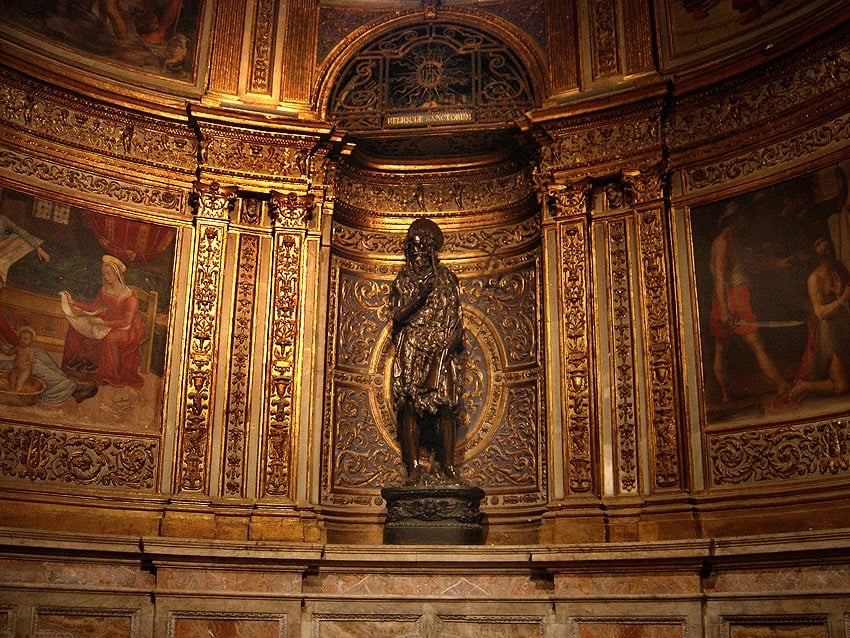
Pinturicchio’s frescoes
Pinturicchio’s frescoes in the Piccolomini Library are a highlight of the cathedral’s artistic treasures.
Commissioned by Pope Pius II, these frescoes depict scenes from the life of Pope Pius II (formerly Aeneas Silvius Piccolomini).
Pinturicchio’s delicate brushwork and vibrant colors bring to life the splendor of the Renaissance era and the papal court, offering a window into both historical events and the cultural milieu of the time.

The small Chigi Chapel, commissioned by Pope Alexander VII in 1659, boasts sculptures by Bernini and his followers and a gilded dome designed by Bernini.
The Altar of Siena Cathedral
The high altar, completed in the 15th century, showcases the harmonious blend of Gothic and Renaissance styles that pervade the cathedral.
The altar was designed by Baldassarre Peruzzi, an influential Italian architect, and artist of the Renaissance.
It features an intricate marble structure adorned with sculptures and reliefs that enhance its visual and spiritual impact.
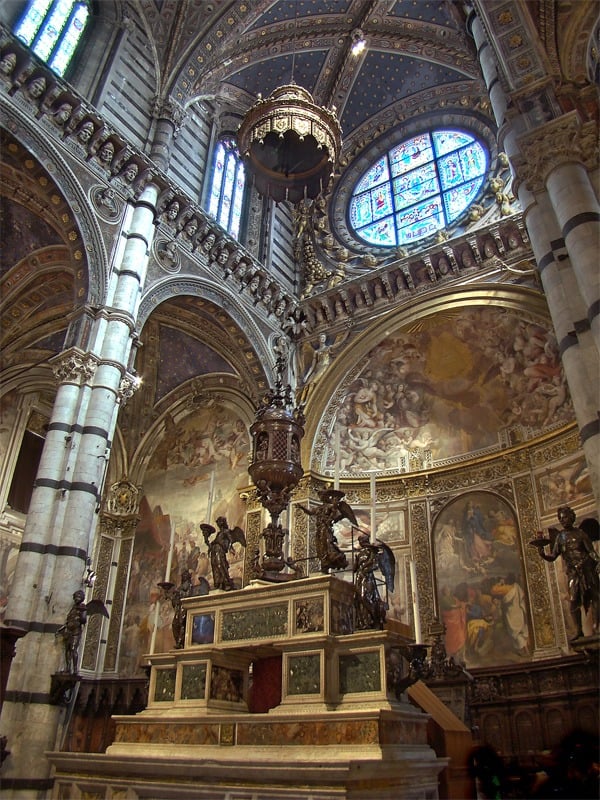
The altar’s design includes a richly decorated altarpiece, known as the Pala d’Oro (Golden Altarpiece), which is an outstanding example of Italian craftsmanship.
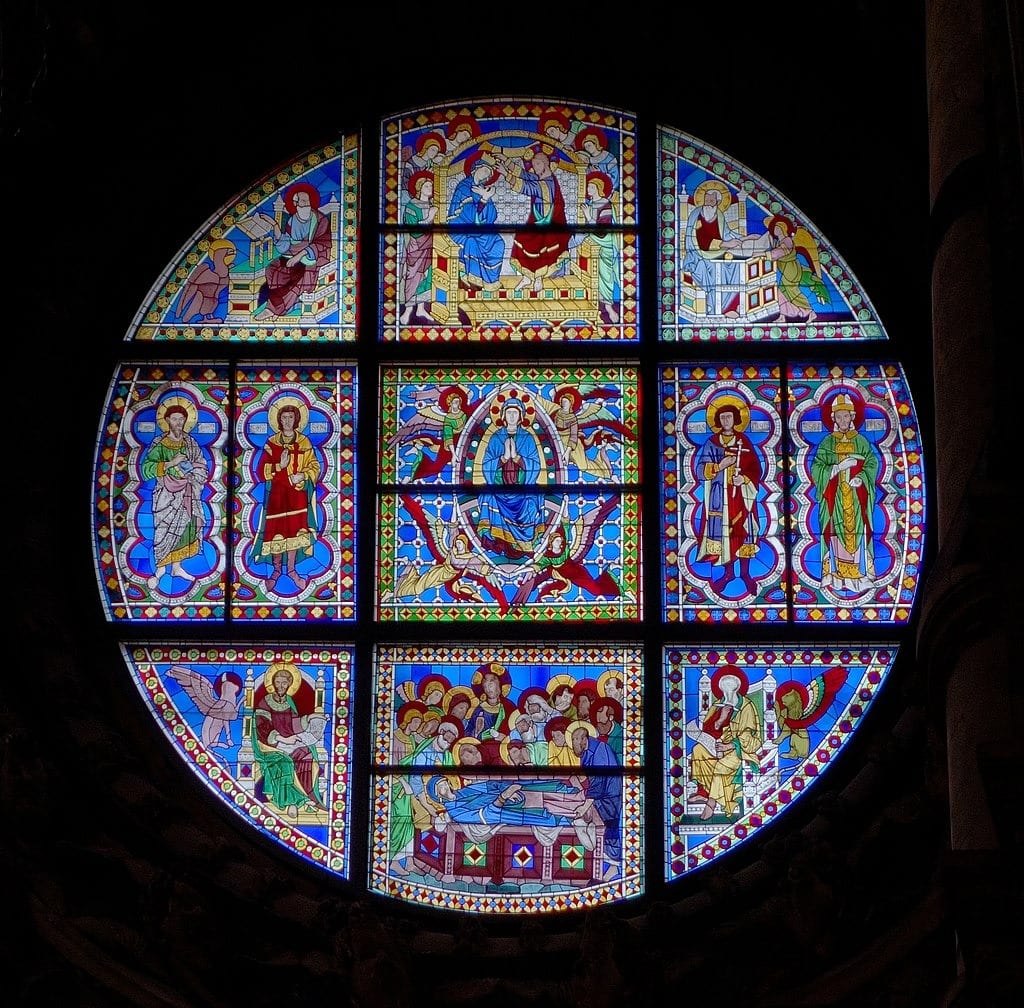
The altarpiece features exquisite goldsmith work and incorporates precious materials, including gold and silver.
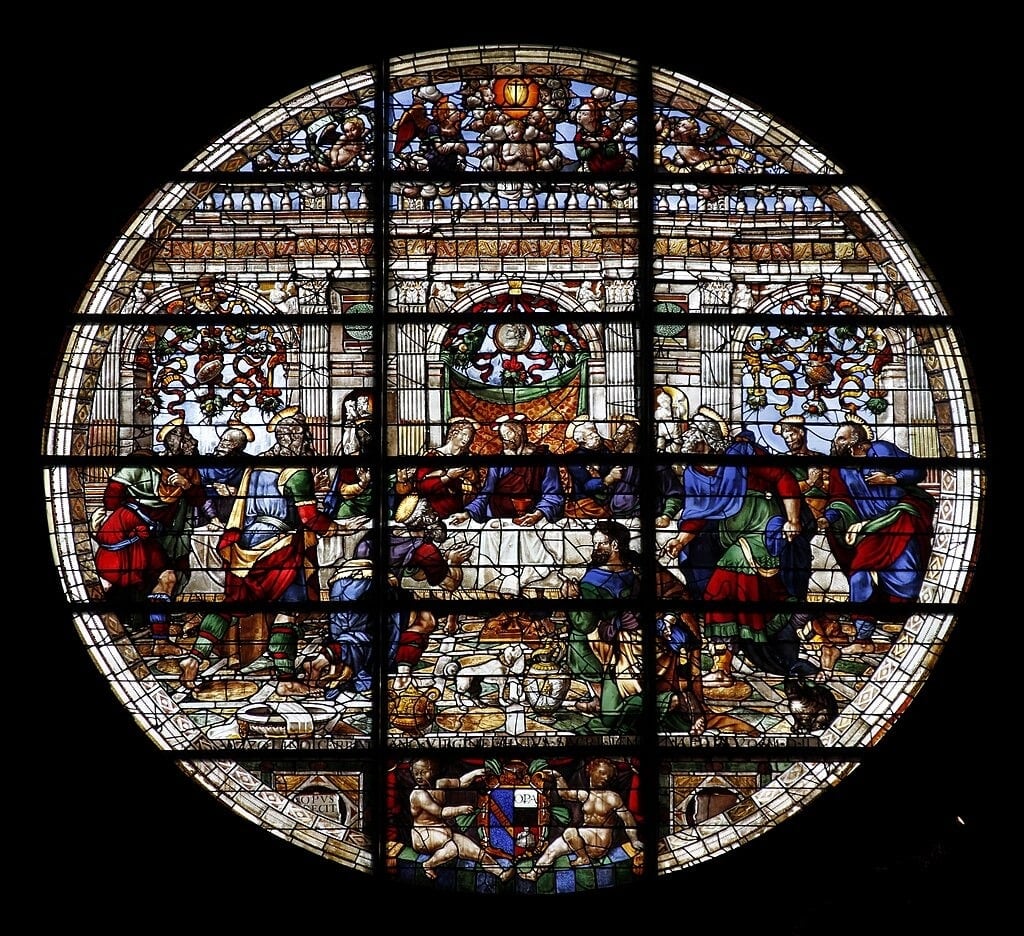
The intricate detailing of the altarpiece reflects the skill of the artisans who created it and their dedication to honoring the sacred space.
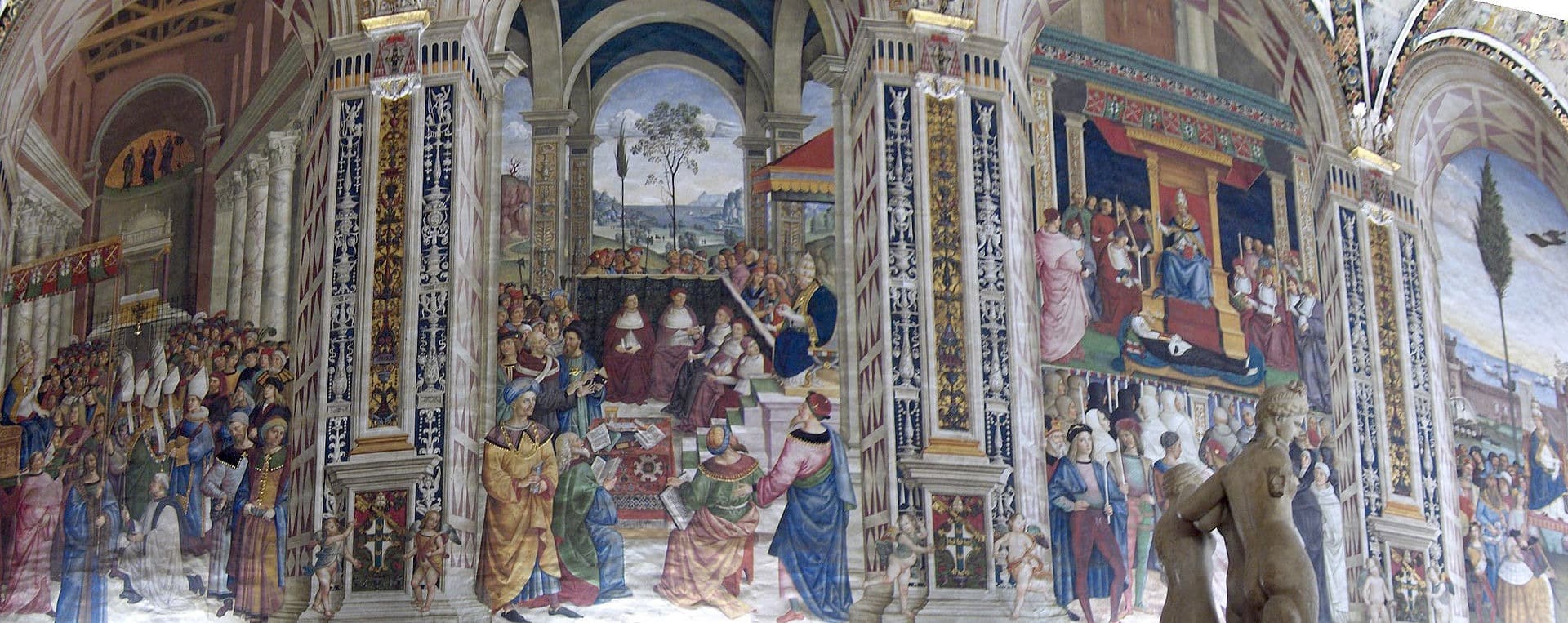
Piccolomini Library
The Piccolomini Library, commissioned in 1492, houses precious illuminated manuscripts and frescoes by Pinturicchio, illustrating the life of Pope Pius II.
The library’s entrance is a finely carved marble monument by Lorenzo di Mariano, featuring a relief of St. John the Evange
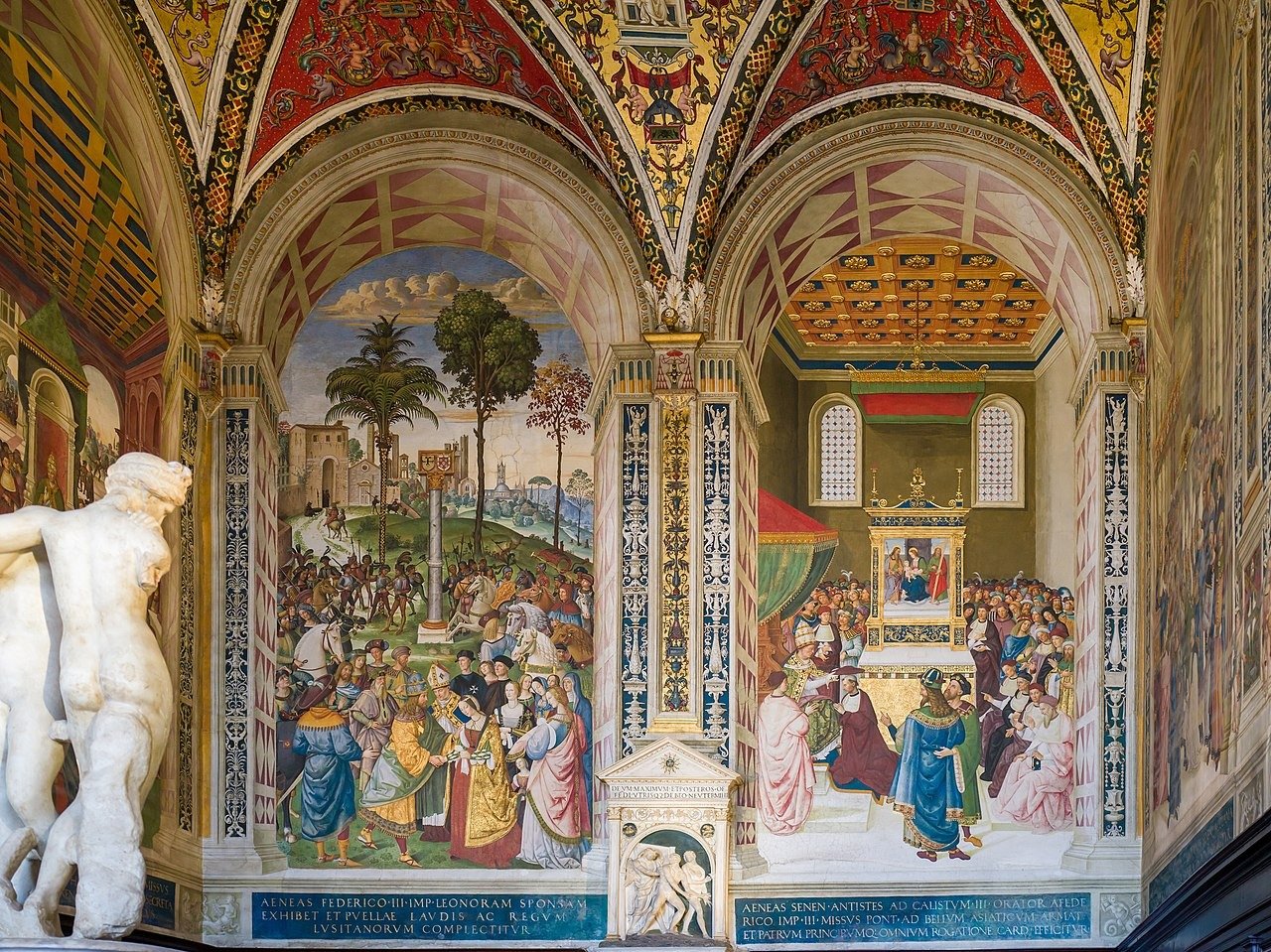
As the seat of the Archdiocese of Siena-Colle di Val d’Elsa-Montalcino, Siena Cathedral holds significant religious and cultural importance for the region.
Siena Cathedral, part of the Historic Centre of Siena, was designated a UNESCO World Heritage Site in 1995.
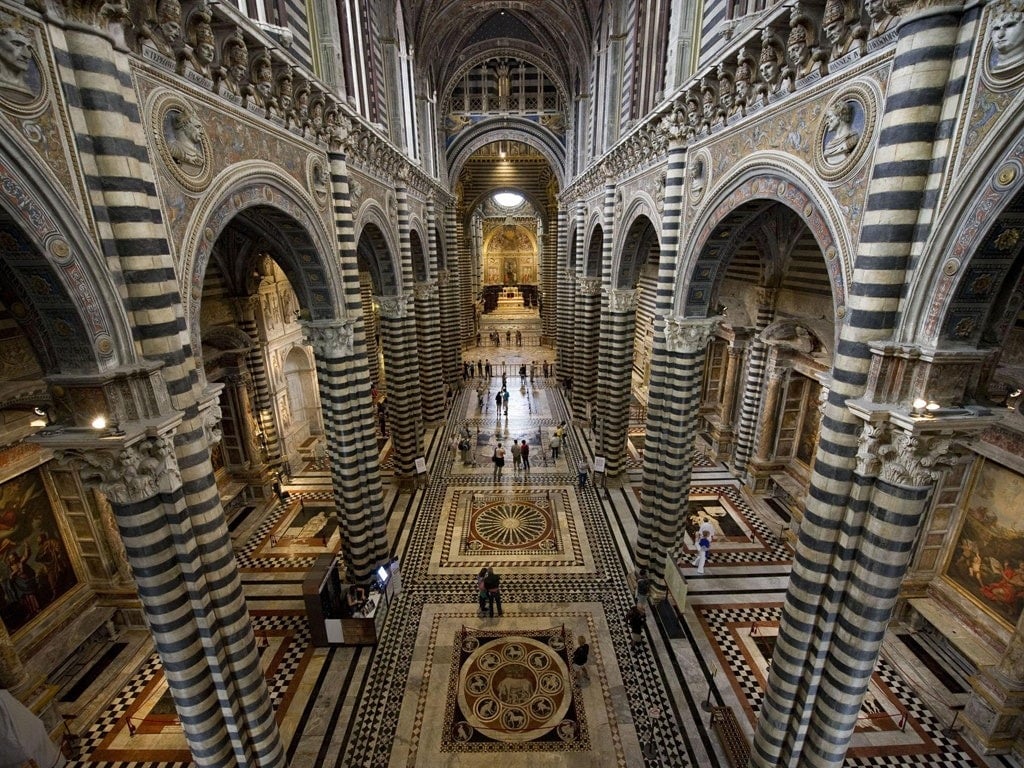
Over the centuries, the cathedral has served as a center of pilgrimage, artistic patronage, and community identity, continuing to inspire awe and reverence among visitors from around the world.

